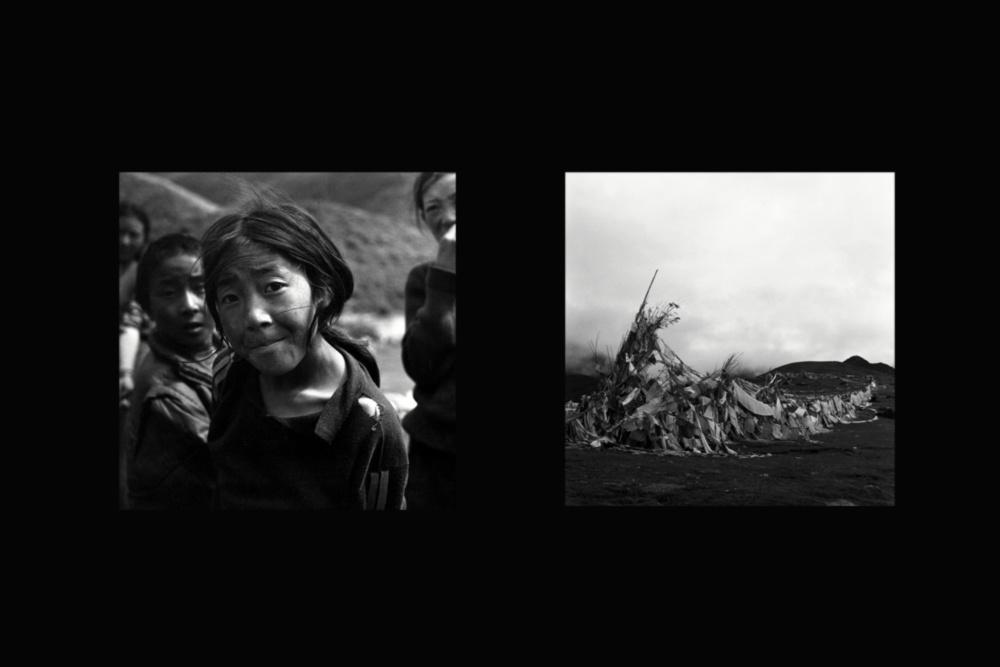
Eugenia Emets’ project keeps up the tradition of Moscow art Tibetology.
The author seems not to be afraid of taking risks. Indeed, the gulf of sense, incorporated in the word Tibet, attracts too many people who are eager to give the world a regular Eastern revelation. In the field of art the sin of orientalism tends to assume the shape of synthesis of arts with visual artifacts complemented by various kinds of performance, and above all, by music — which is known as the most spiritual one among all aesthetic practices. At first sight Emets’ project is of the same kind. It possesses practically the whole set of new-age attributes — images of ancient symbols, pietism for profundity of religious philosophy, even electronic musical ambiance, which enshrouds the exhibition’s items. The only, but definite difference — the interpretation of the topic is very calm, without any strain, and it is presented as the author’s unobtrusive and subjective one.
The work at “108” started with the author’s trip to Tibet, similar to a usual one for any press photographer. However, in Emets’ case the proportion of actual shooting and subsequent processing of documentary material differs from that in usual press photography — both in quantitative and conceptual sense. Location shots have composed mainly the first out of three, black-and-white part of the exhibition. As for the rest, here actuality got such consideration that it resulted in metaphoric, or even absolutely abstractedly symbolic images.
One of the “108” main ideas became the principle, which underlies the Eastern world image, that is: deep accordance of macro and microcosms, of a big natural and a small human world. Thus, in Emets’ work the concept of dialectic duality becomes law of intermutation. In a black-and-white, documentary group of images the artist chooses a double photograph in a single frame as a unit of aesthetic comment. Along with this, one of the two images is indispensably correlated with macro, and the other with micro level. Then, in the second part, with the help of a merely photographic alchemistry, she gets a layered image, the aim of which is to show the shift of plot from a purely physical level to a spiritual, psychological one. It is the level where micro and macro are shown directly coincident, but not just correlated. The shift itself has a technological backup as well. If location shooting was carried out in a traditional analogous way, then the printing of images was performed in a digital way. As a result the initial corporeity, concrete subject-matter of analogous photography was substituted by electronic abstraction. As for the third part of the project, the images of which belong entirely to the sphere of abstract symbols, here digital photographic image merges together with computer graphics, which is similar to the outer world only on the surface.
However, in fact, at the heart of the whole exhibition there is a binary digital code, due to which the graphics, the photograph and the video become various dialects of one and the same language. That is why, when photographic sublimation of the worldly into the heavenly finally results in audio-set and video-mix, the project gets the last logic — and technologic — element. As for the correlation of form and content, which is a rather problem issue in the new media art practice, it gets a fresh, promising model.
Vladimir Levashov
The Foundation has published an illustrated catalogue of the exhibition with an essays by Adelie Di Ruocco and Vladimir Levashov.